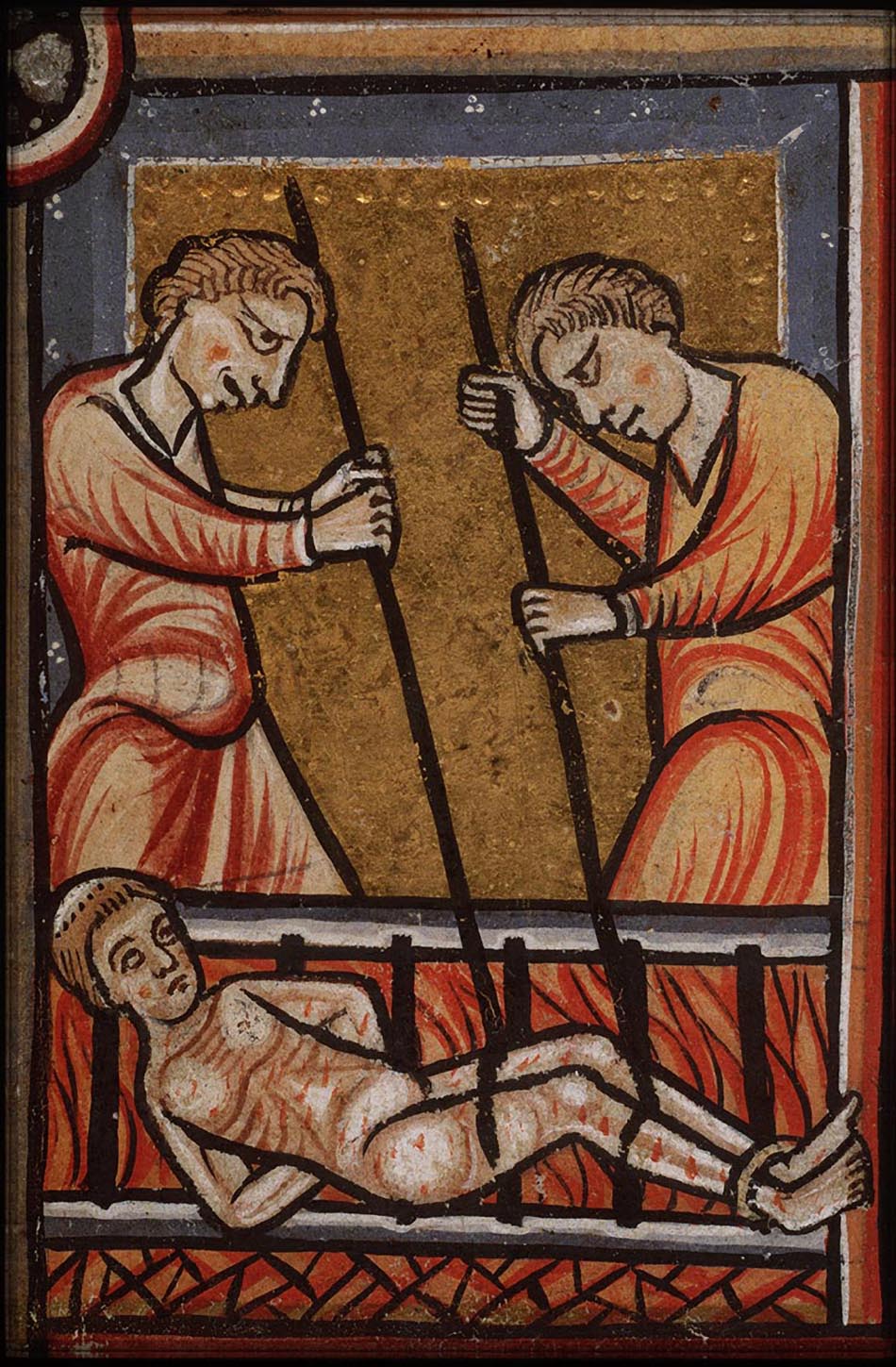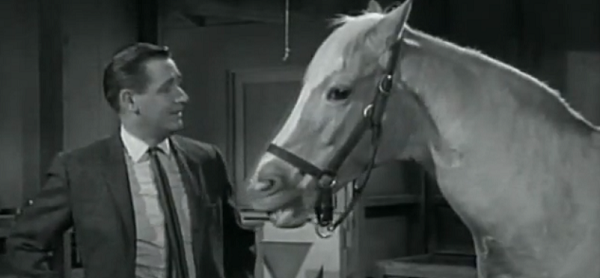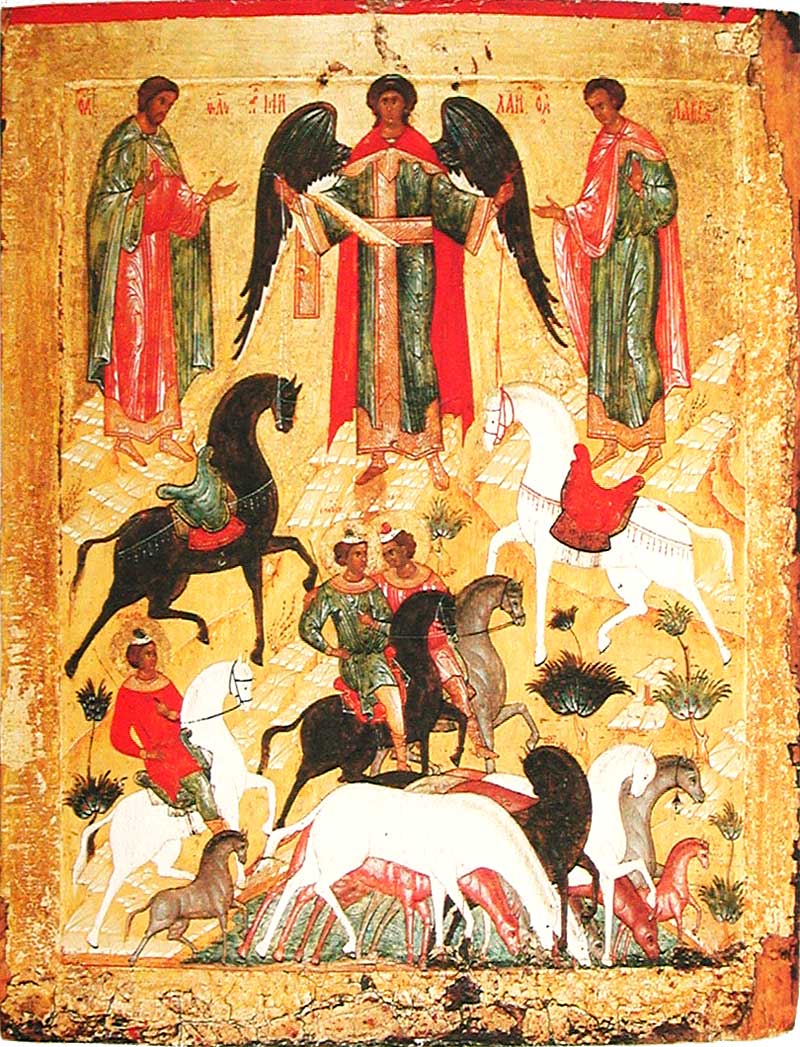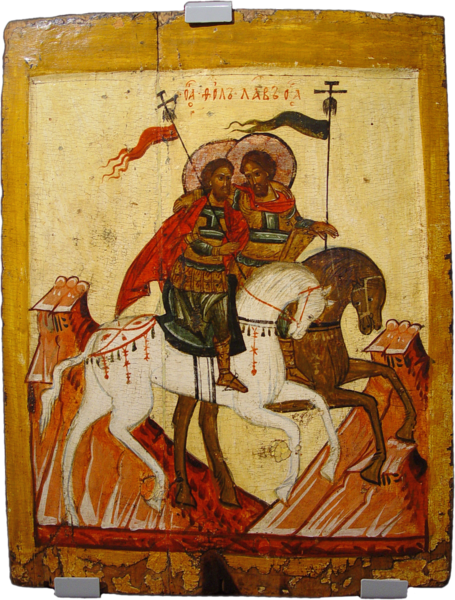
16th century Russian icon of SS. Florus and Laurus.
Florus and Laurus, twin brothers who were second century martyrs, are considered the patrons of horses among the Rus because a local horse plague was healed by their relics. Russian peasants would tether their horses around the church on their feast day (August 18) and avoid putting the horses to work in order to avoid a recurrence of the plague. According to The Golden Bough, peasants didn’t plough with horses on the brothers’ feast day for fear of causing a cattle plague but would lead their horses round their village church. The horses were often also driven to a local pond and driven into the water after a priest had blessed it; the horses were washed in the pond and then led in procession around the church.
The twin brothers were stonemasons in the district of Illyricum. According to the story, Likaion, the prefect of Illyricum, employed the brothers in the construction of a pagan temple. The brothers gave their salaries to the poor. When the son of a local pagan priest named Mamertin was injured by a chip of stone from the saints’ temple, Florus and Laurus cured the boy after the boy converted to Christianity. Mamertin also decided to convert to Christianity as a result of his son’s recovery.
After the temple was built, Florus and Laurus brought together many local Christians there. The group smashed all of the statues of the pagan gods, a cross was set up in the temple, and the Christians spent the whole night in prayer in the converted temple. As a result of this action, the local authorities had 300 Christians, including Mamertin and Mamertin’s son, burned to death. However, Florus and Laurus were executed by being thrown down an empty well which was then covered over with earth.
Later tales also say that one day Florus and Laurus lost their horses. The two brothers appealed to the Archangel Michael to help them recover the runaway horses. The archangel helped them recover the horses and the two decided to dedicate their lives to horses. In addition, SS. Elashippus, Speushippus & Melashippus are often depicted with SS. Florus and Laurus. These three other men were Cappadocian brothers, two of them twins, who were grooms and horse doctors, who were said to have been trained as horse doctors by SS. Florus & Laurus and the Archangel Michael himself.
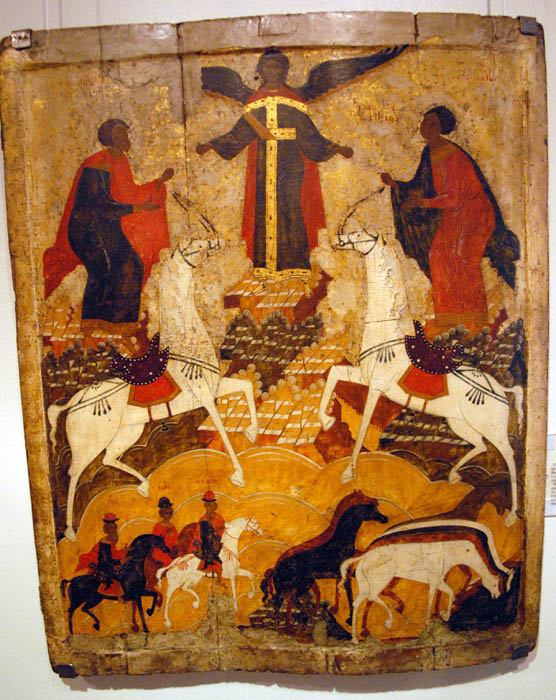
This icon was painted approximately AD 1500 – 1600 in Nizhny Novgorod and depicts the 3 horse doctor brothers below SS. Flarus and Laurus.

